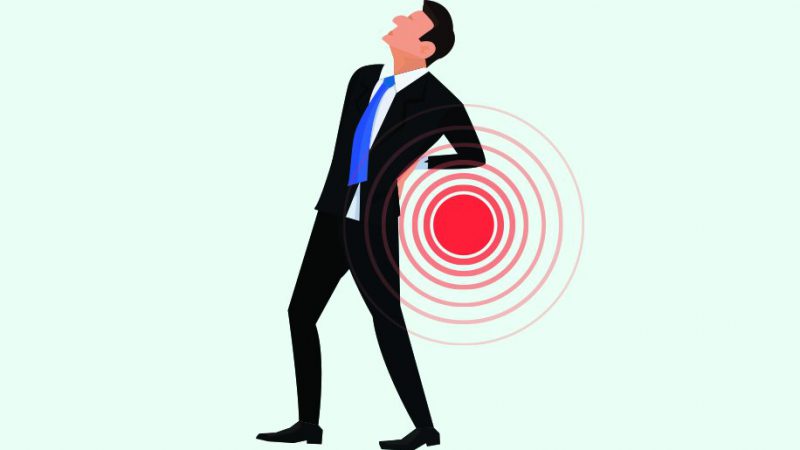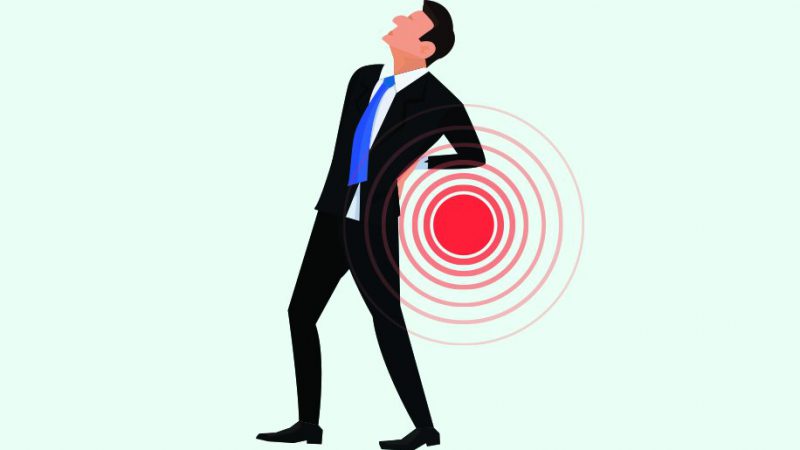Back on the Road
We all know travel can be a pain, but when it hits below the belt you need to know there’s something you can do about it
April 29, 2019


Nearly a third (28.4 percent) of adults in the US experienced lower back pain last year, according to the National Institutes of Health. The causes include sciatica, often attributable to a “slipped disc.” Lower back pain, with or without sciatica, is widely recognized as one of the most severe sources of chronic pain.
Factors such as bad posture, elevated stress levels, cigarette smoking, a sedentary lifestyle and weight are all known to contribute to the onset of back pain and sciatica.
Sciatica is the collective name for a set of symptoms (including pain, weakness or numbness in the buttocks or leg, and a burning/tingling sensation down the leg) caused by a disc bulge (also called a prolapsed, herniated or slipped disc). The predisposition to this disc bulge is genetic but the event of “slipped disc” itself can be caused by lifestyle or injury: any sudden jerking movements – from a car accident, for example – can place too much pressure on the disc, causing it to bulge. Most get better after about three months, but some disc bulges cause longer-term pain.
CORE OF THE ISSUE
Dr Ben Huntley is a consultant in pain management from London Sports Orthopedics and London Bridge Hospital, part of HCA Healthcare UK. He says: “Posture and preparation are the most important ways of avoiding back pain. What we mean by preparation is maintaining general fitness and, through exercise, working on strengthening the core muscles and gluteals,” Huntley says.
“We tend to think of the problem as being to do with the bony part or the disc parts of the spine and we neglect the muscle.” And yet, when traveling, it is muscular support for the spine that is particularly important.
“Traveling for prolonged periods in an upright position is not ideal, and a reclined position is better,” he says. “For those likely to suffer from back pain, long periods sitting can both cause and aggravate the problem.”
So what to do? Well, avoidance is the first aim, by maintaining that general fitness. Make sure you have a strong core, as well as maintaining flexibility. Both yoga and pilates can play a part in this. A good physiotherapist can offer specific advice tailored to the individual.
“If you are already suffering from either back pain or sciatica, non-steroidal anti-inflammatory drugs (NSAIDs) such as ibuprofen can help, but tend to provide a modest degree of pain relief,” Huntley advises. “Drugs such as ibuprofen can also come as a cream or gel and can work just as well in this way.” Stronger pain relievers, such as co-codamol, which is a compound of codeine and acetaminophen, can help, he says, but cautions to beware of potential side-effects.
FLIGHT TIPS
For severe cases of sciatica, pain relief such as an epidural steroid injection can help. A spinal injection, it must be performed at least two days before a flight. It “accurately targets and deposits an anti-inflammatory steroid in the relevant part of the back to treat sciatica,” Huntley says.
During a long-haul flight, Huntley advises standing up and moving around. “The worst position for your back is to sit at 90 degrees, so standing and walking to offload your back is important at regular intervals.”
He adds meditation can also play a role—especially with pain: “Mindfulness- based meditation can be part of a healthy lifestyle and a strategy to manage any given pain. Most people experience back pain at some time in their lives and back pain is an extra stress. The key is to prepare to manage that extra stress by keeping that core strong.”
FIVE WAYS TO RELIEVE THE PAIN
■ Strengthen the core muscles and gluteals
■ Maintain flexibility through yoga and pilates
■ Take anti-inflammatory drugs or painkillers such as ibuprofen or co-codamol
■ Stand up and move around at regular intervals
■ Practise mindfulness meditation




